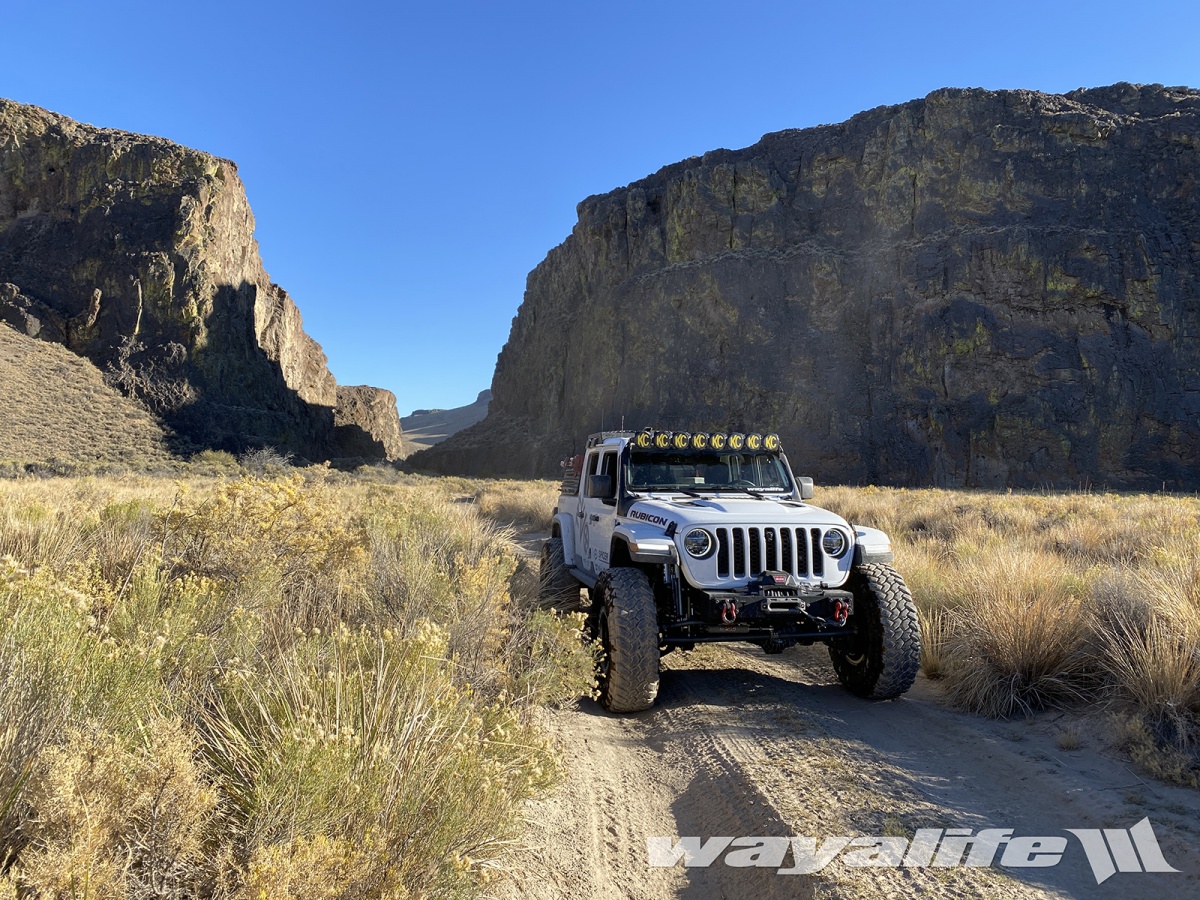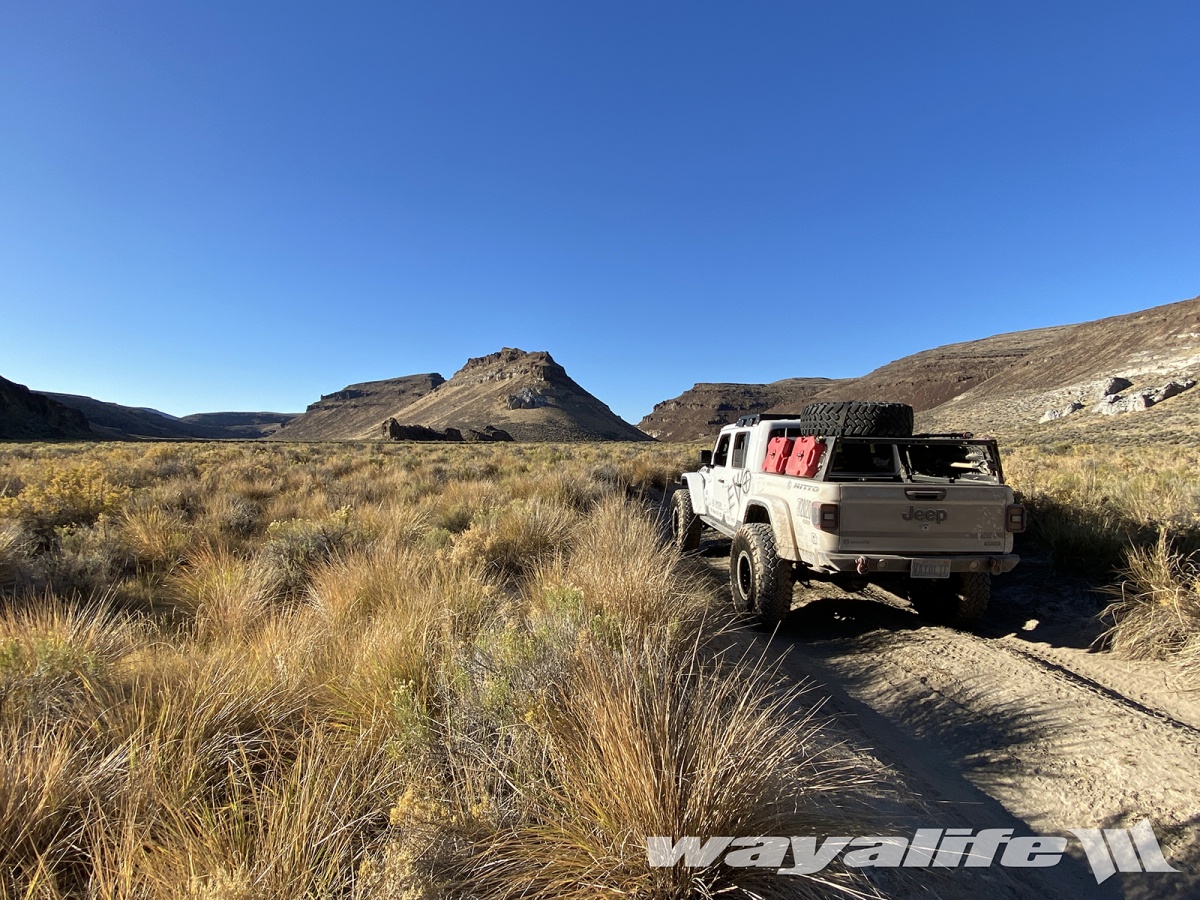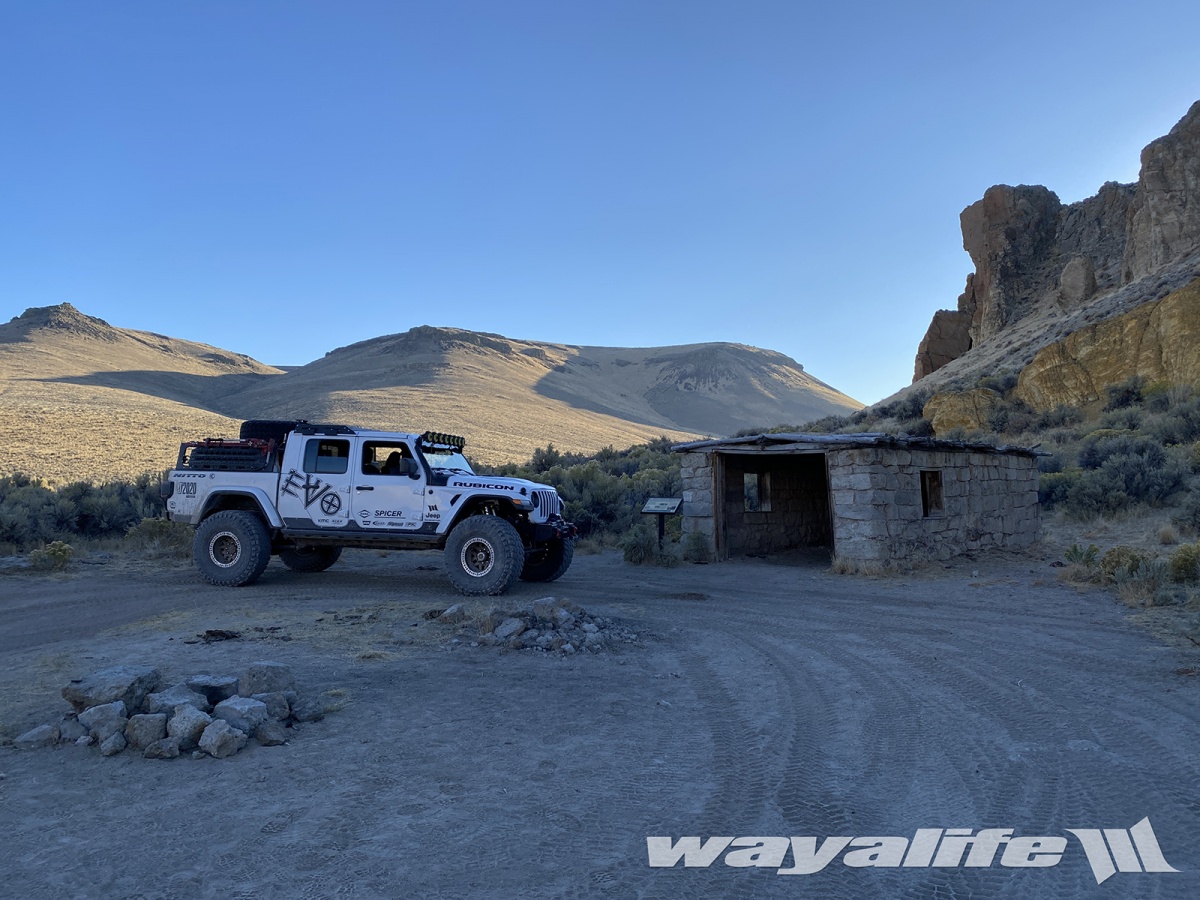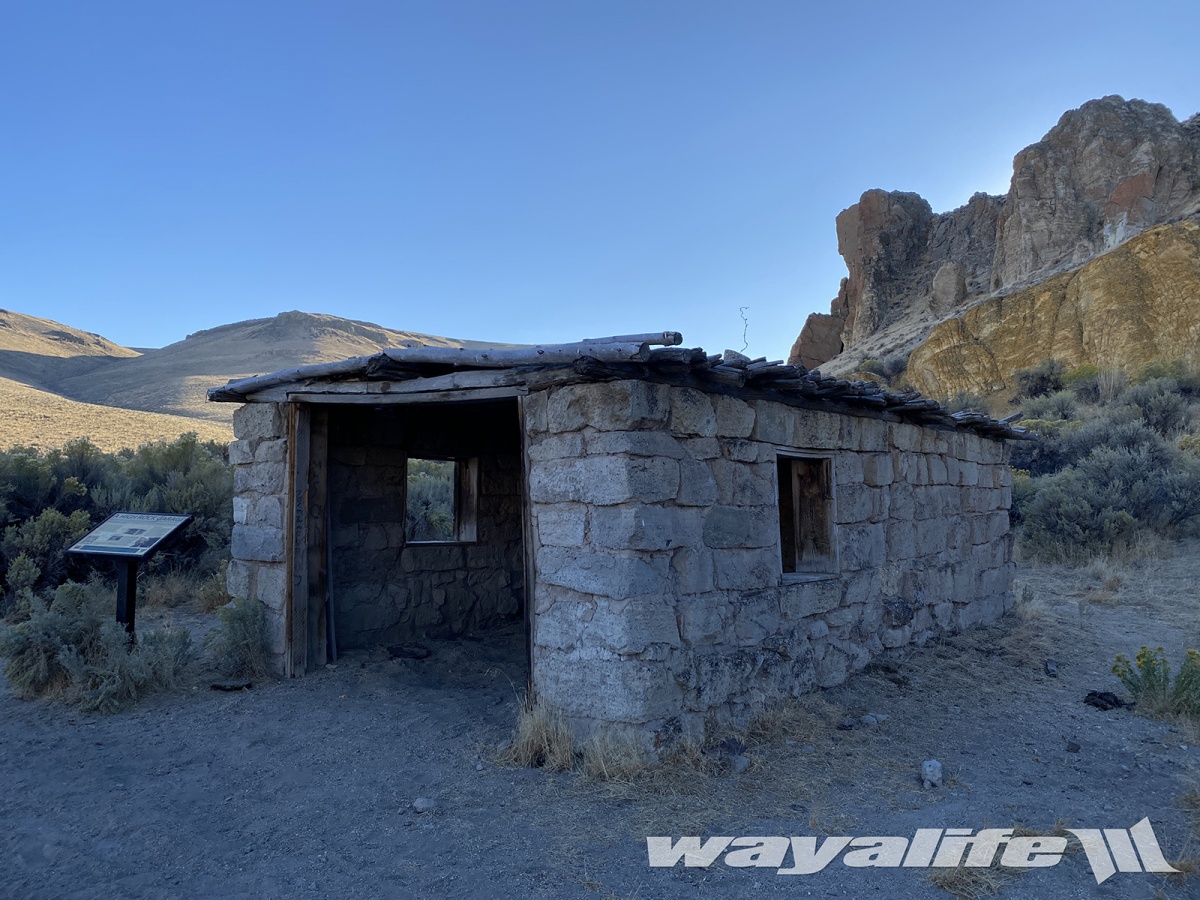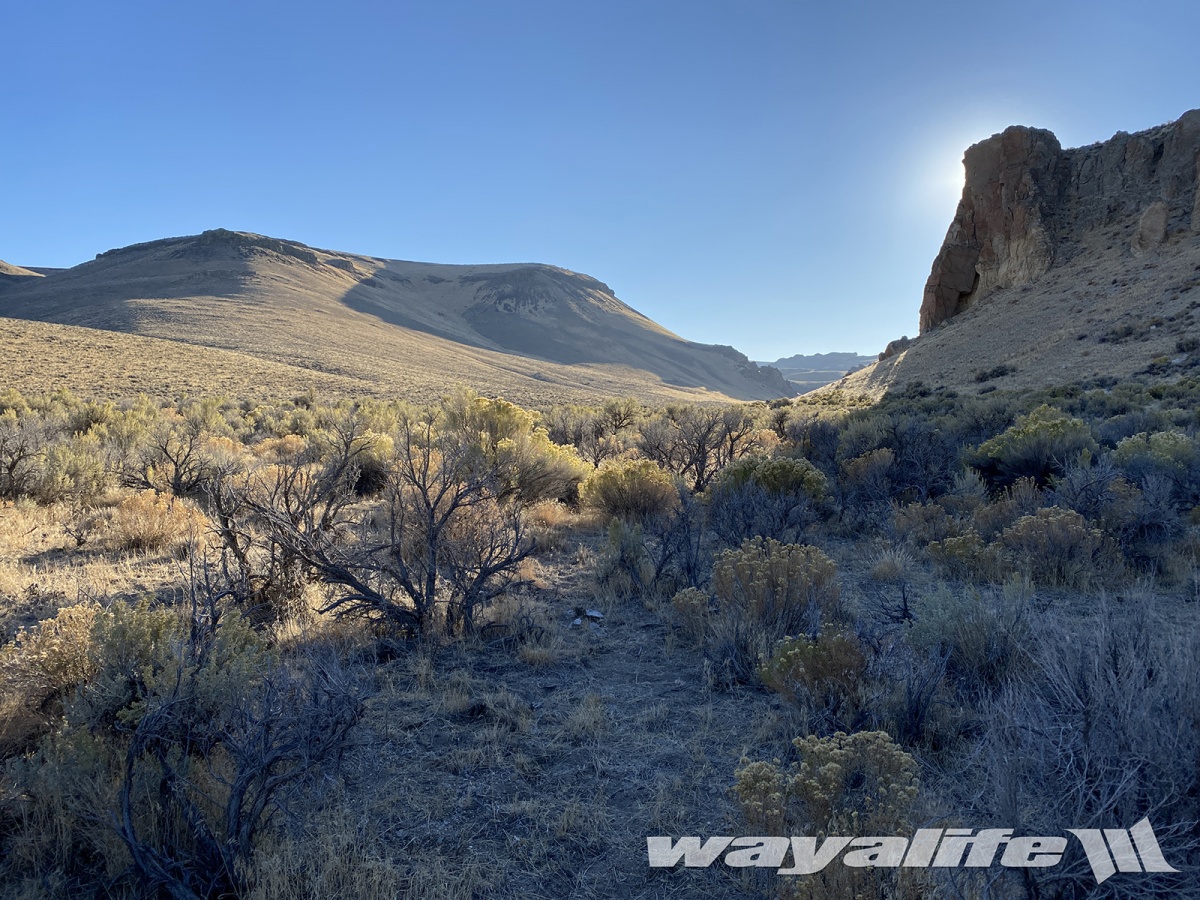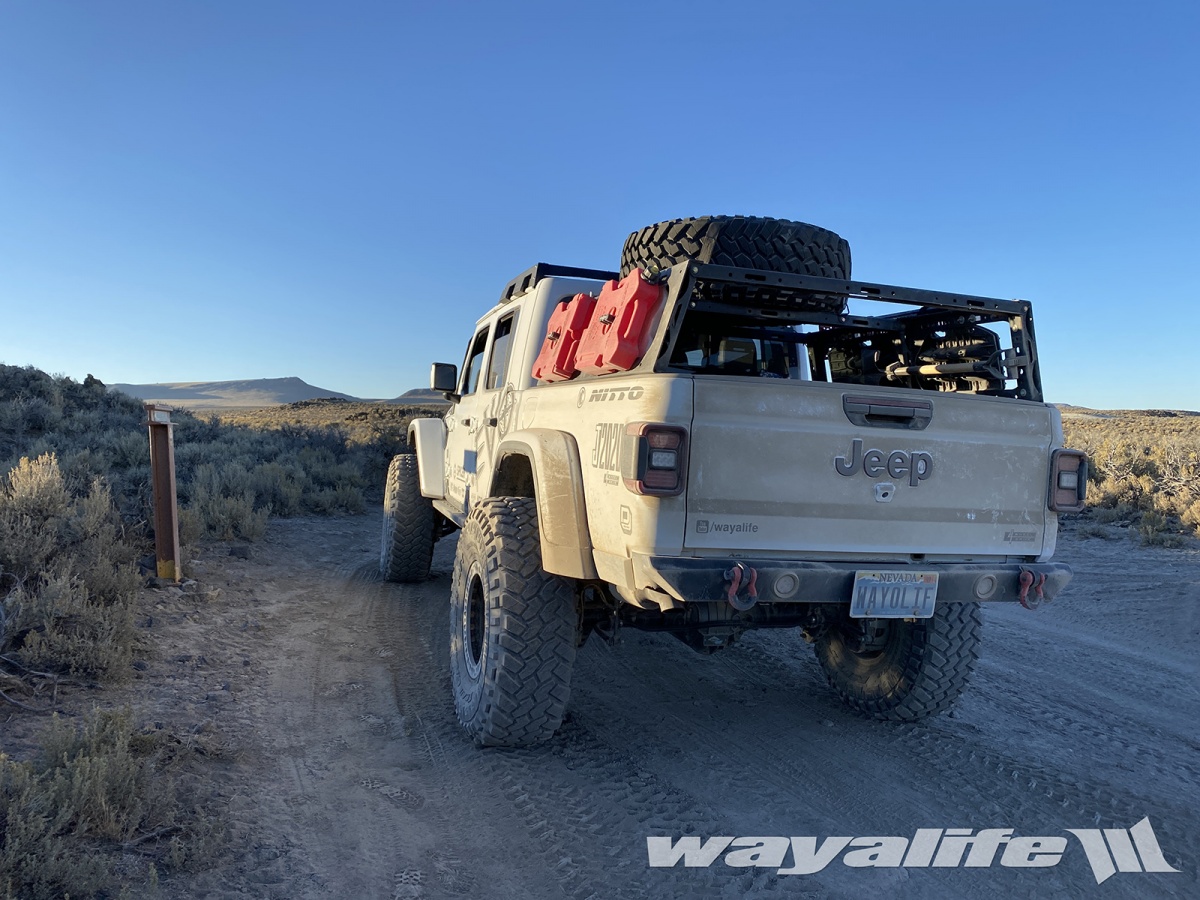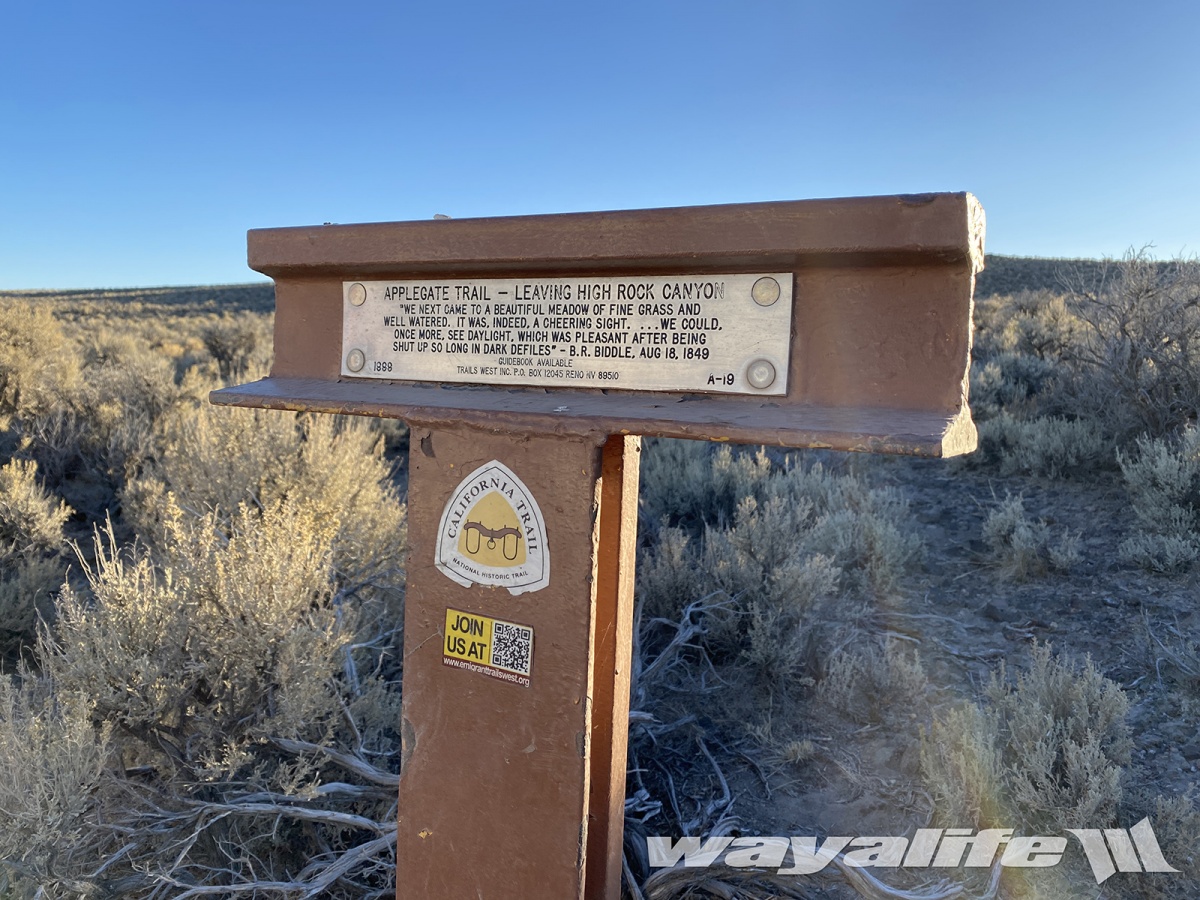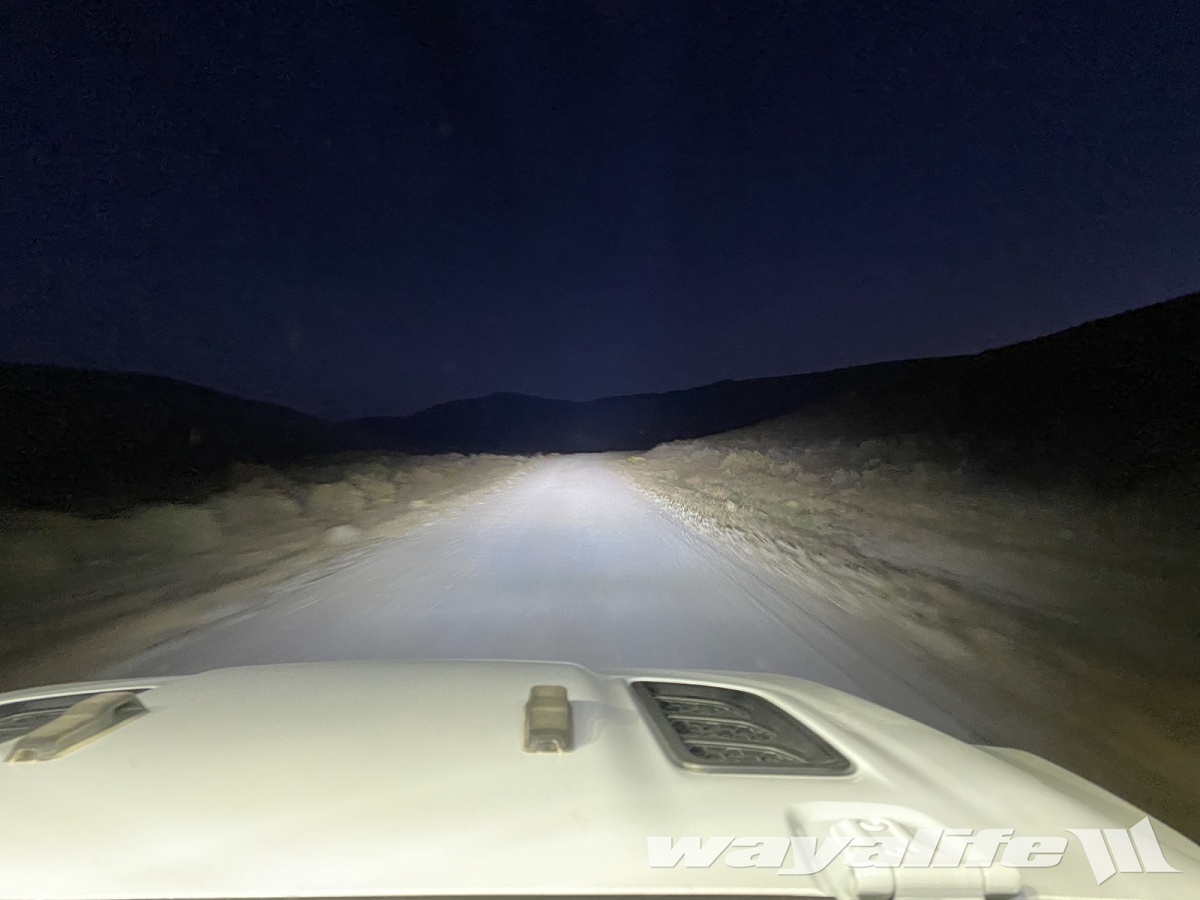Last year and just on the threshold of autumn, Cindy and I found a day when we could get away for a day and decided to lose ourselves in the Northern Nevada Desert. We weren't really sure of where we would end up but before we knew it, we found ourselves out in the Blackrock Desert. To go any further would typically mean spending a night under the stars but we really wanted to get back out onto the Applegate Trail and visit High Rock Canyon. Needless to say, we topped off our tank and continued our way north and in spite of the fact we wouldn't get back home until the wee hours of the night.
Although the area is remote... really remote as in, far away from civilization, the Applegate Trail and High Rock Canyon are well marked and well maintained by the BLM. In fact, there are certain times of year that the trail is closed for the wildlife.
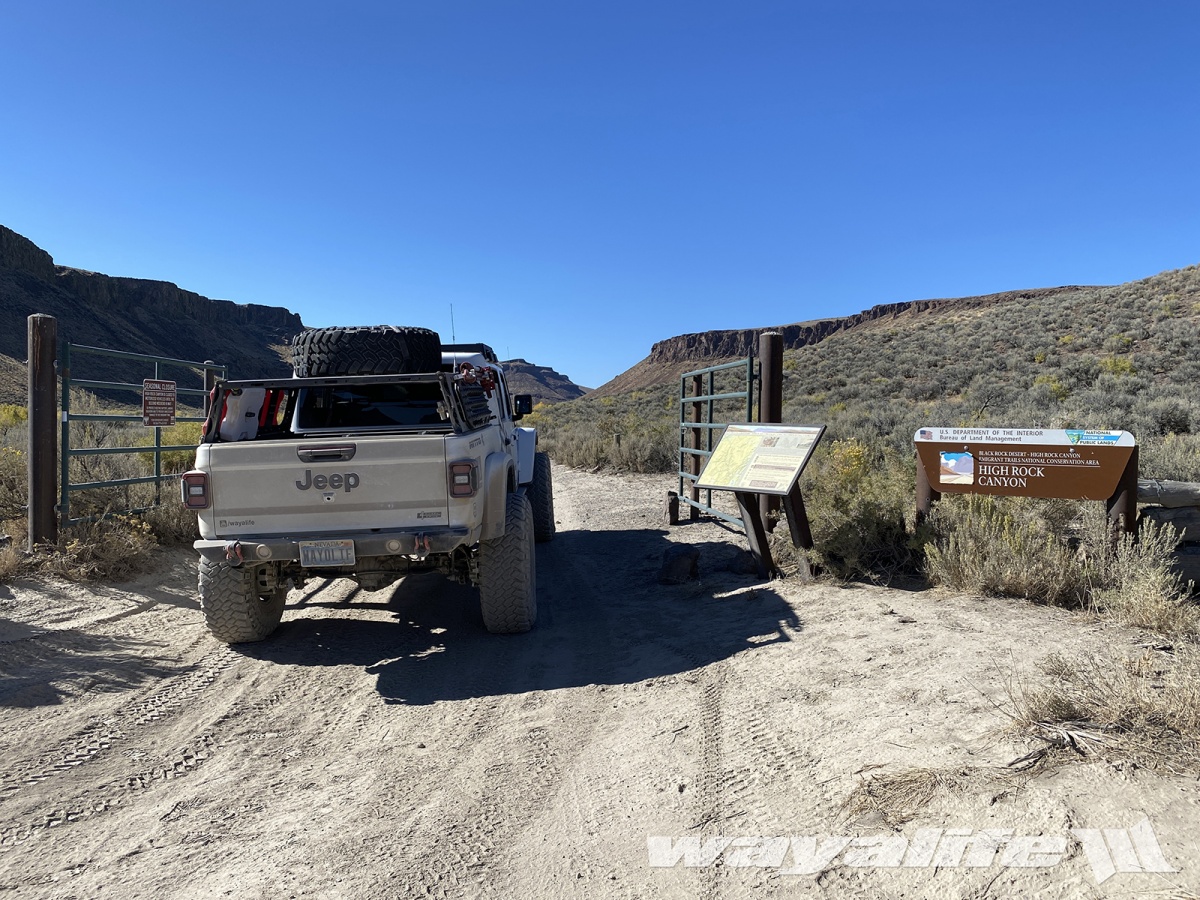
Autumn is a really nice time of year to be hear if only because the weather is nice and cool and the rabbit bush is in bloom.
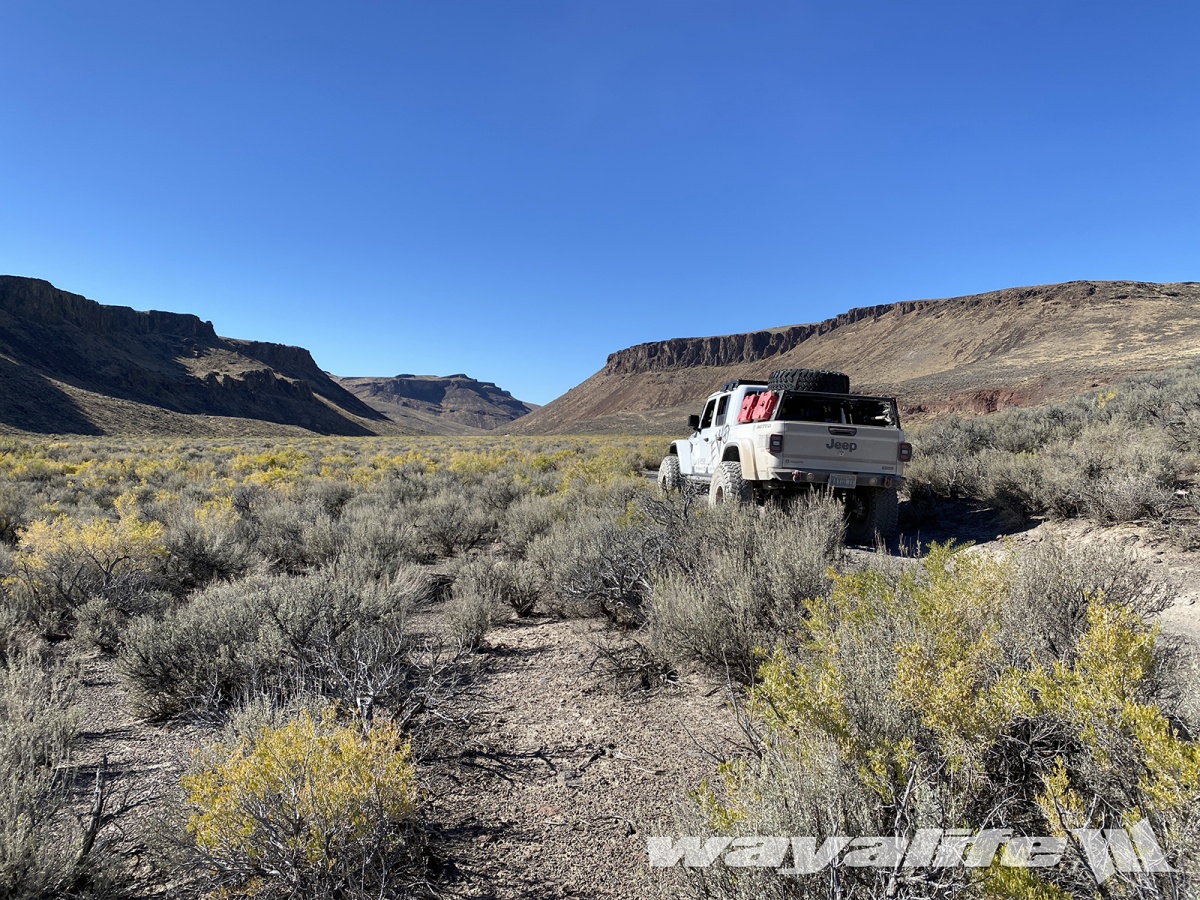
It doesn't take long for the canyon to narrow up and get thick with brush.
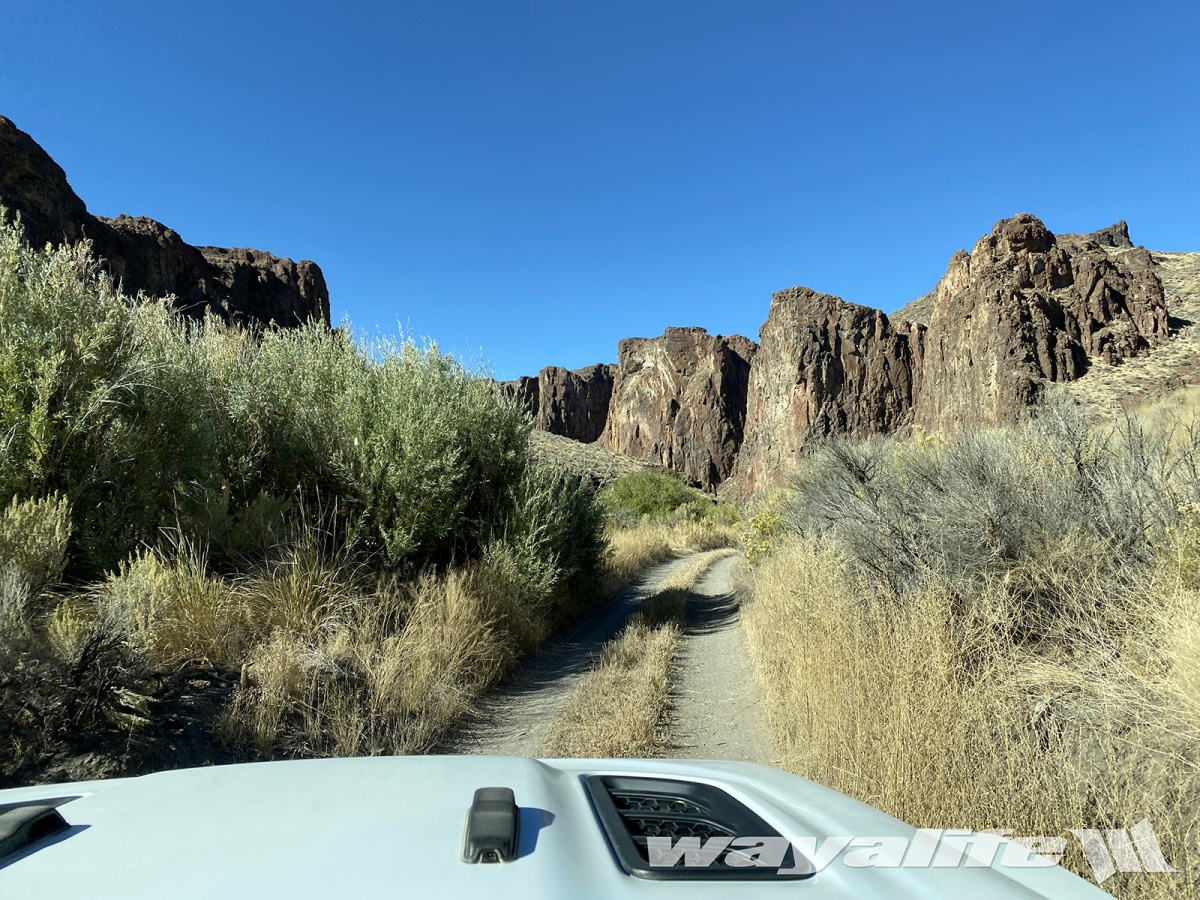
Our first real stop of the day was at the old High Rock Canyon Post Office.
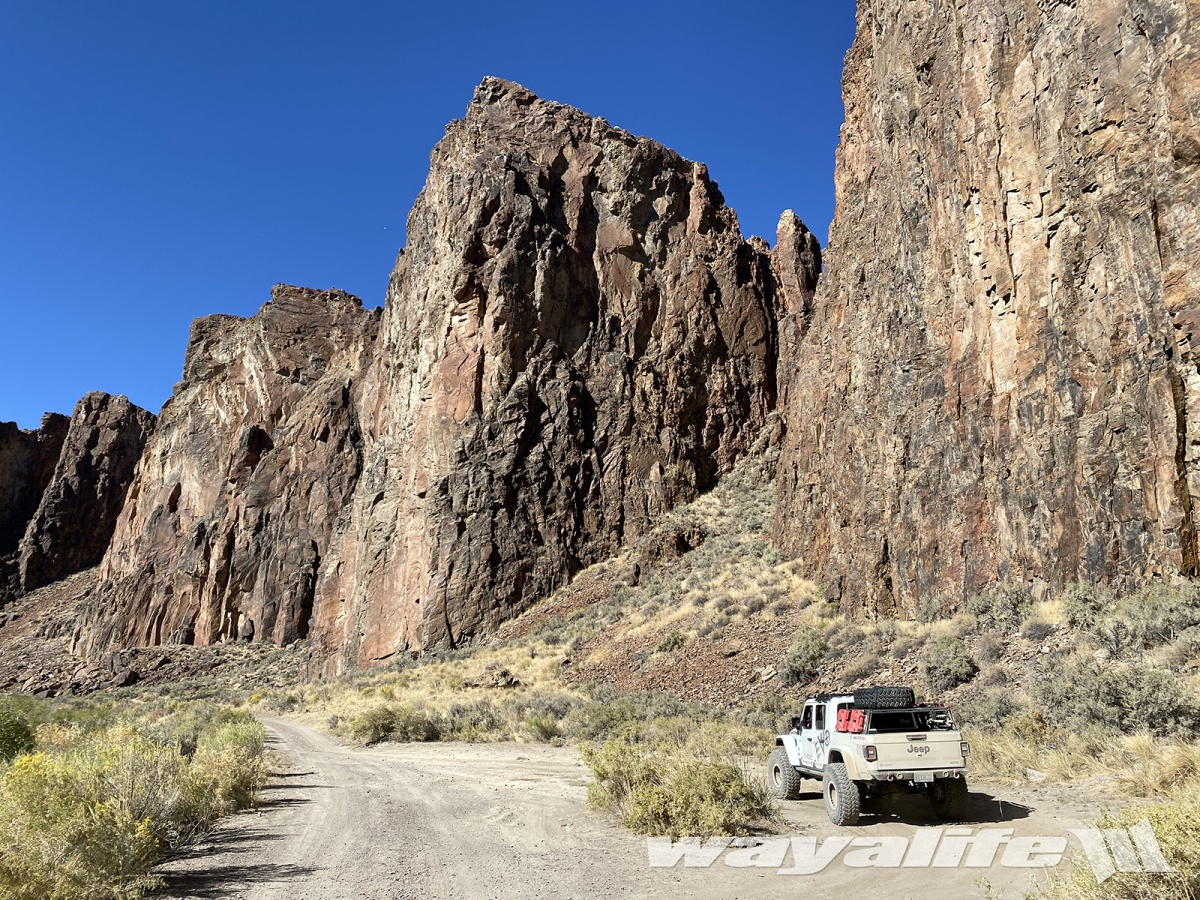
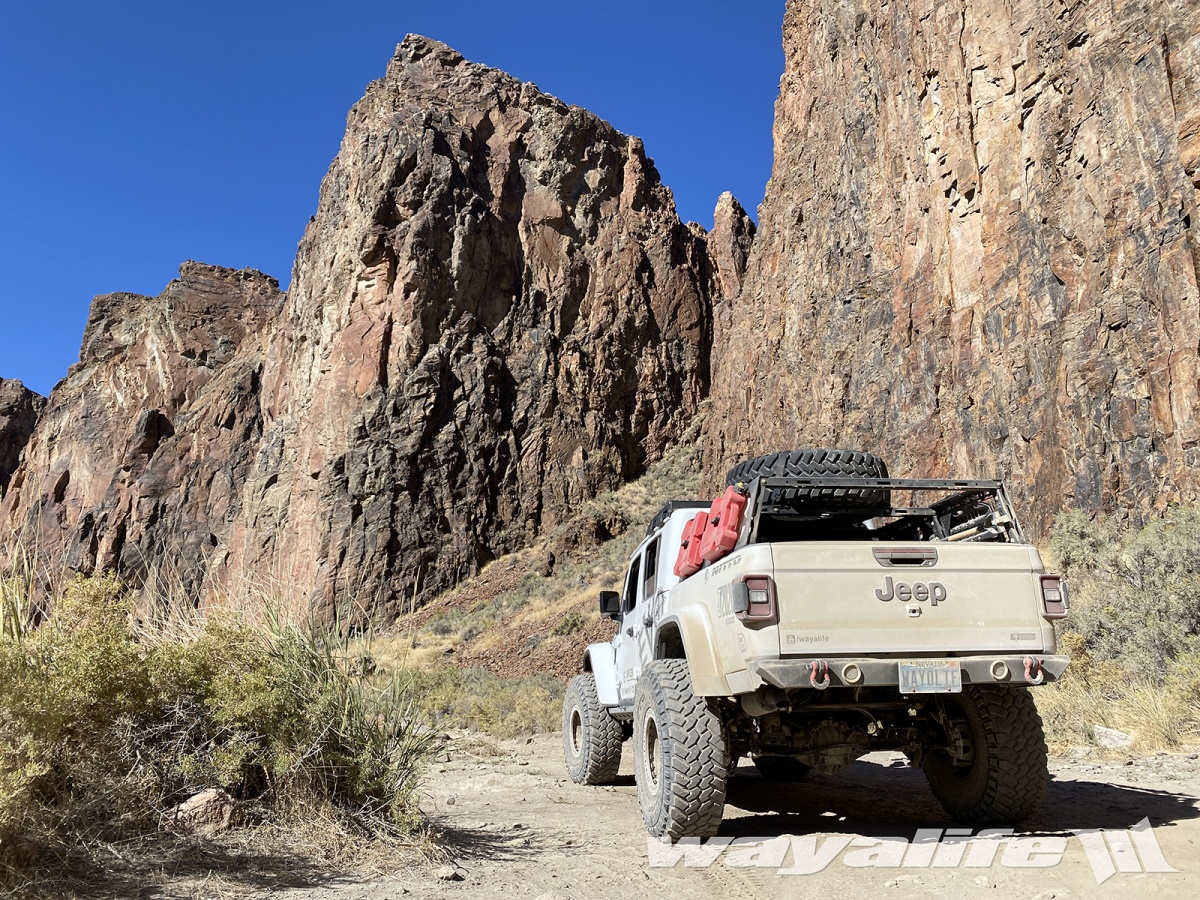
I say "post office" loosely because it really isn't much more than a cave in the canyon walls.
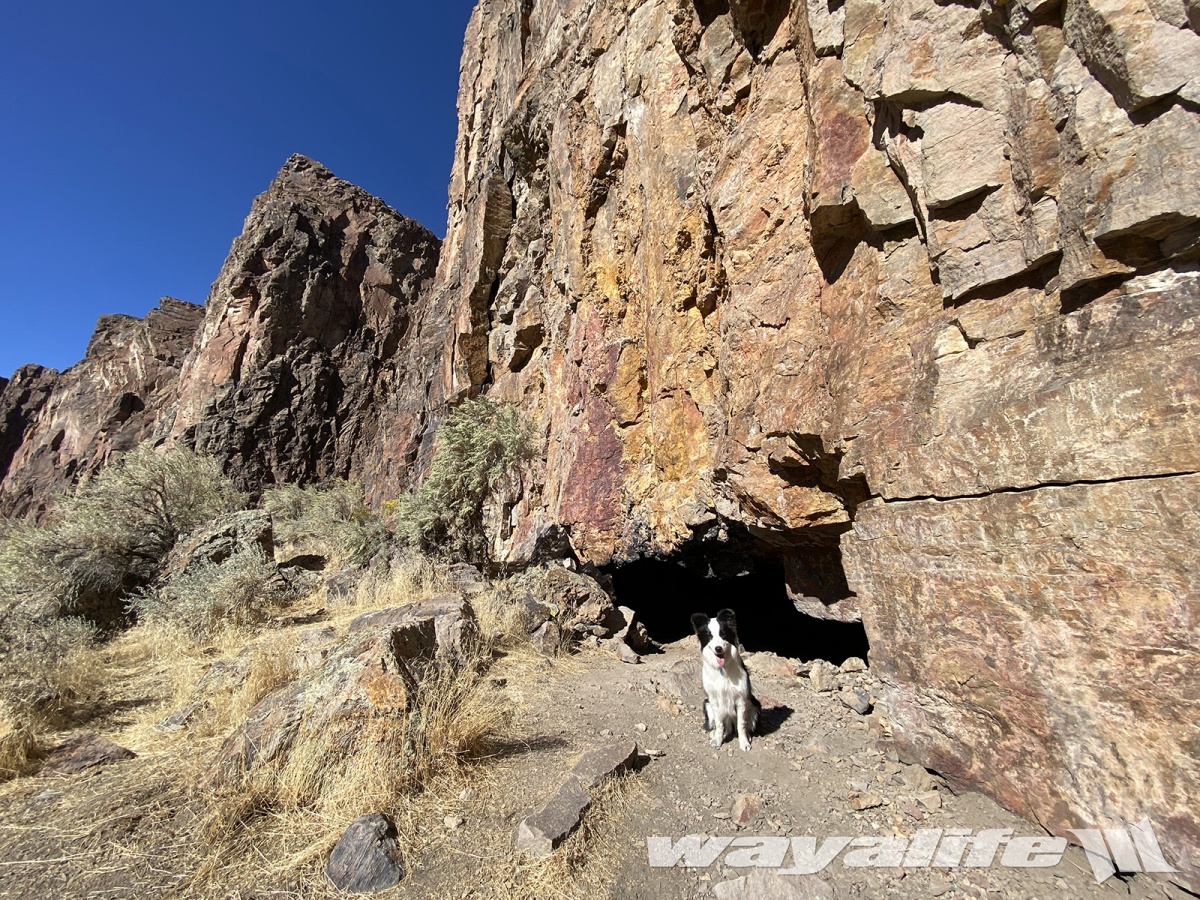
There are actually multiple caves like this in the canyon and emigrants making their way to California and Oregon would have left messages in them written on paper or in axle grease on the walls. This was typically done by fathers who ventured out early to stake a claim and the message would have been for loved ones who would have left later in the year when the weather and traveling conditions were better.
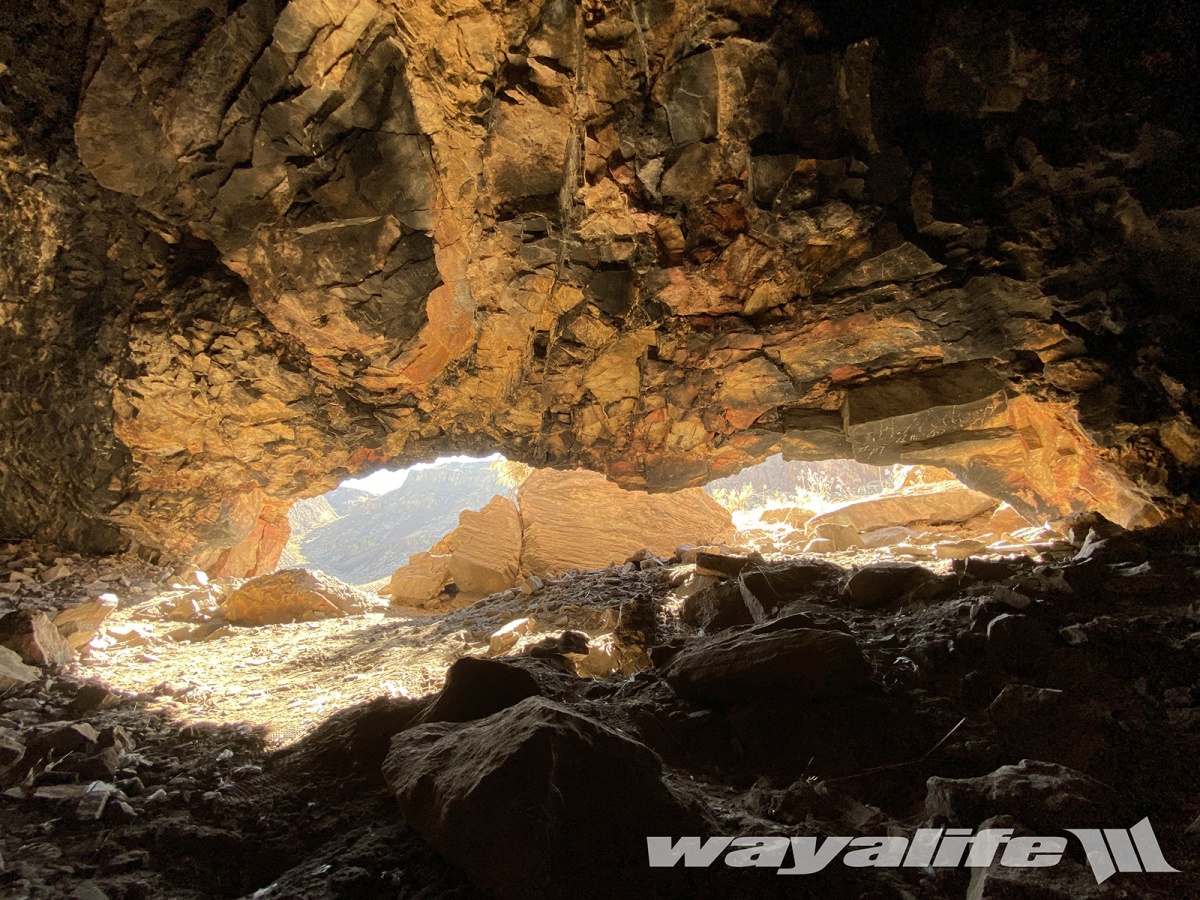
Although Captain John C. Fremont first recorded his travels through High Rock Canyon back in 1843, it wouldn't be until 1846 that the first wagon train on route to the Willamette Valley or the gold fields in California would start making their way through. In fact, between 1846 and the mid 1860's, it's estimated that 48,000 emigrants would have come this way and many took the time to leave their mark on the towering rock walls.
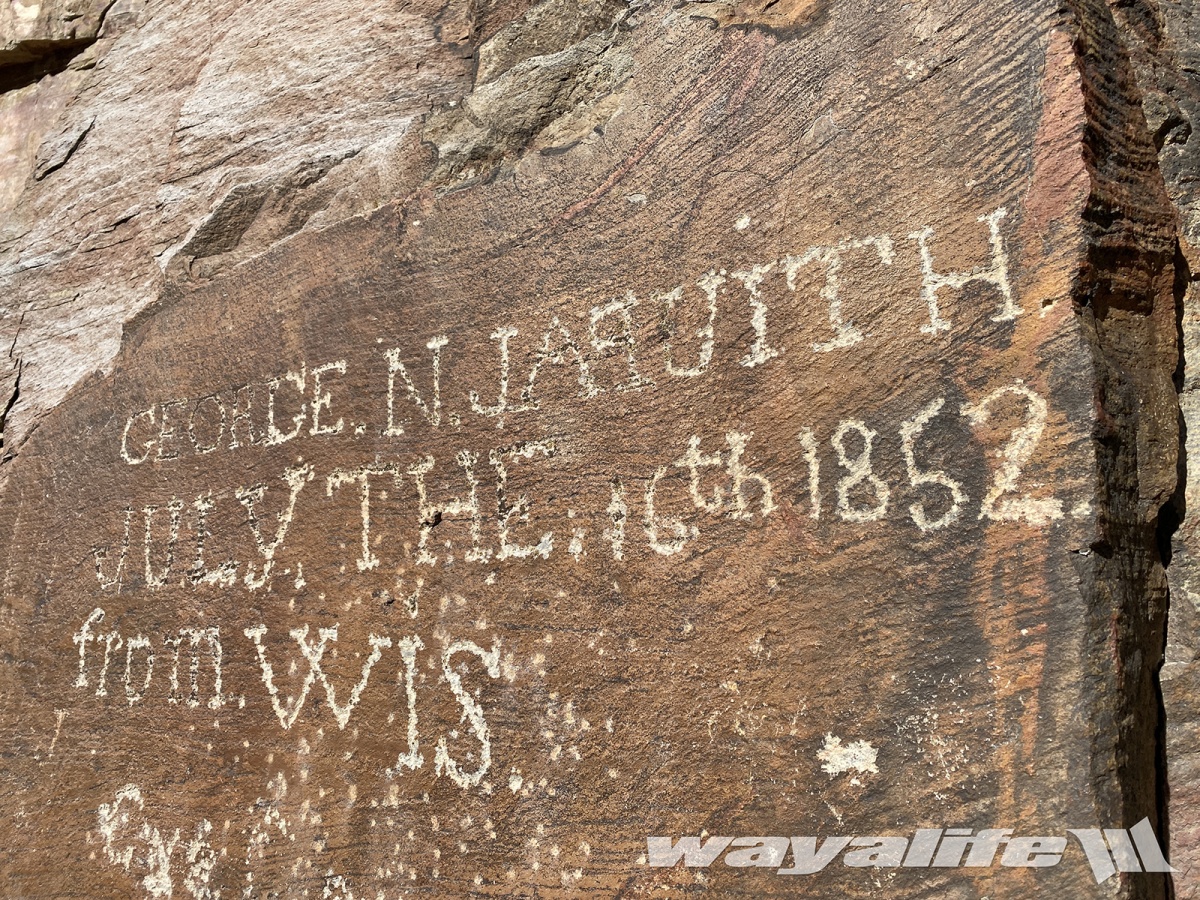
While some were pecked out of the rock, many were written in axle grease.
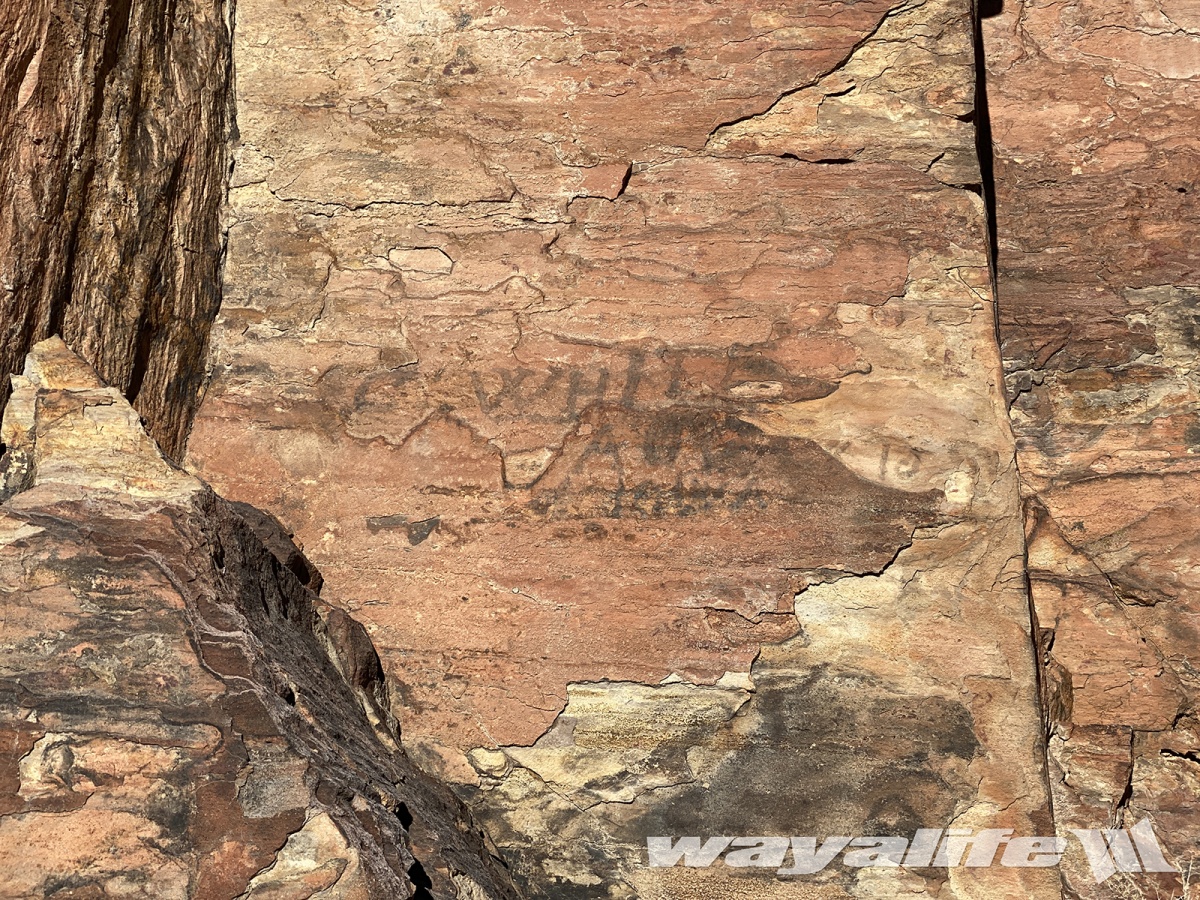
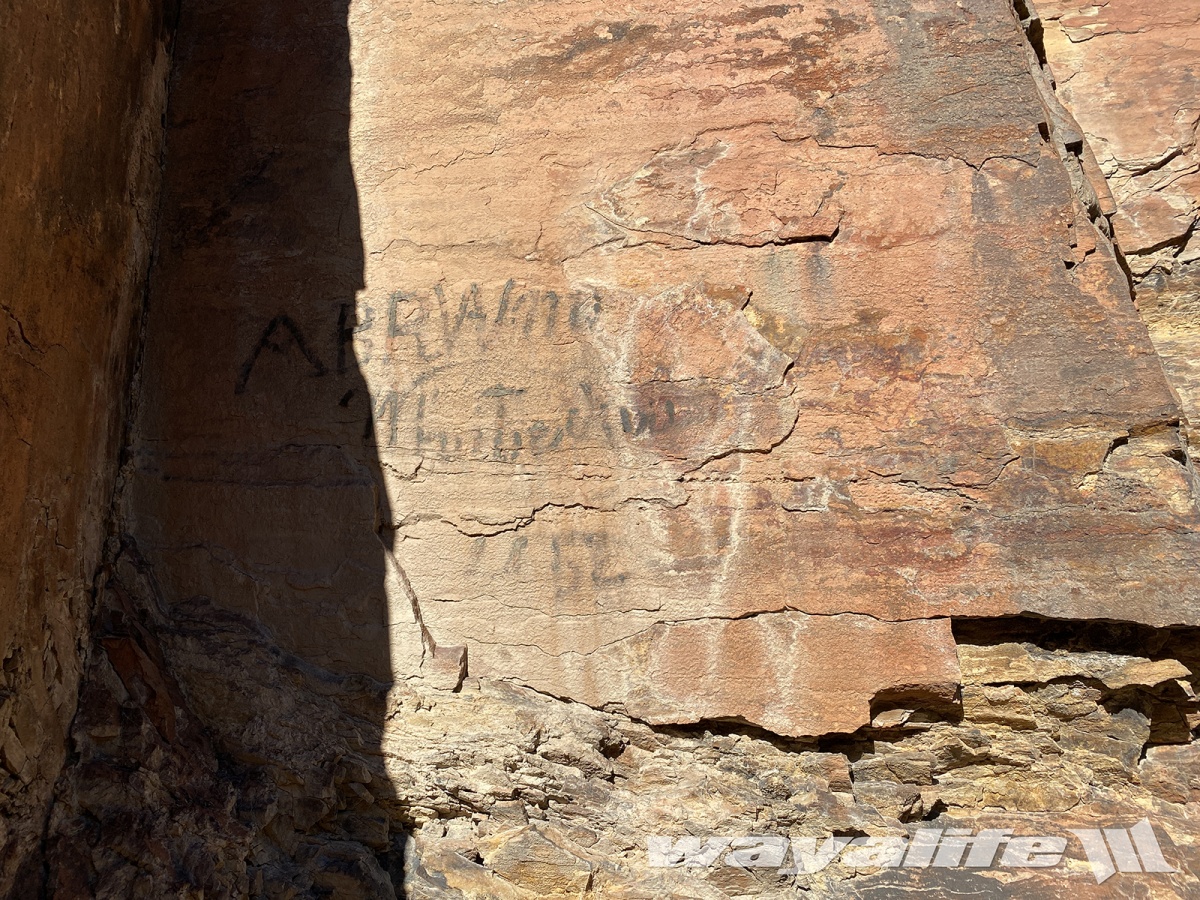
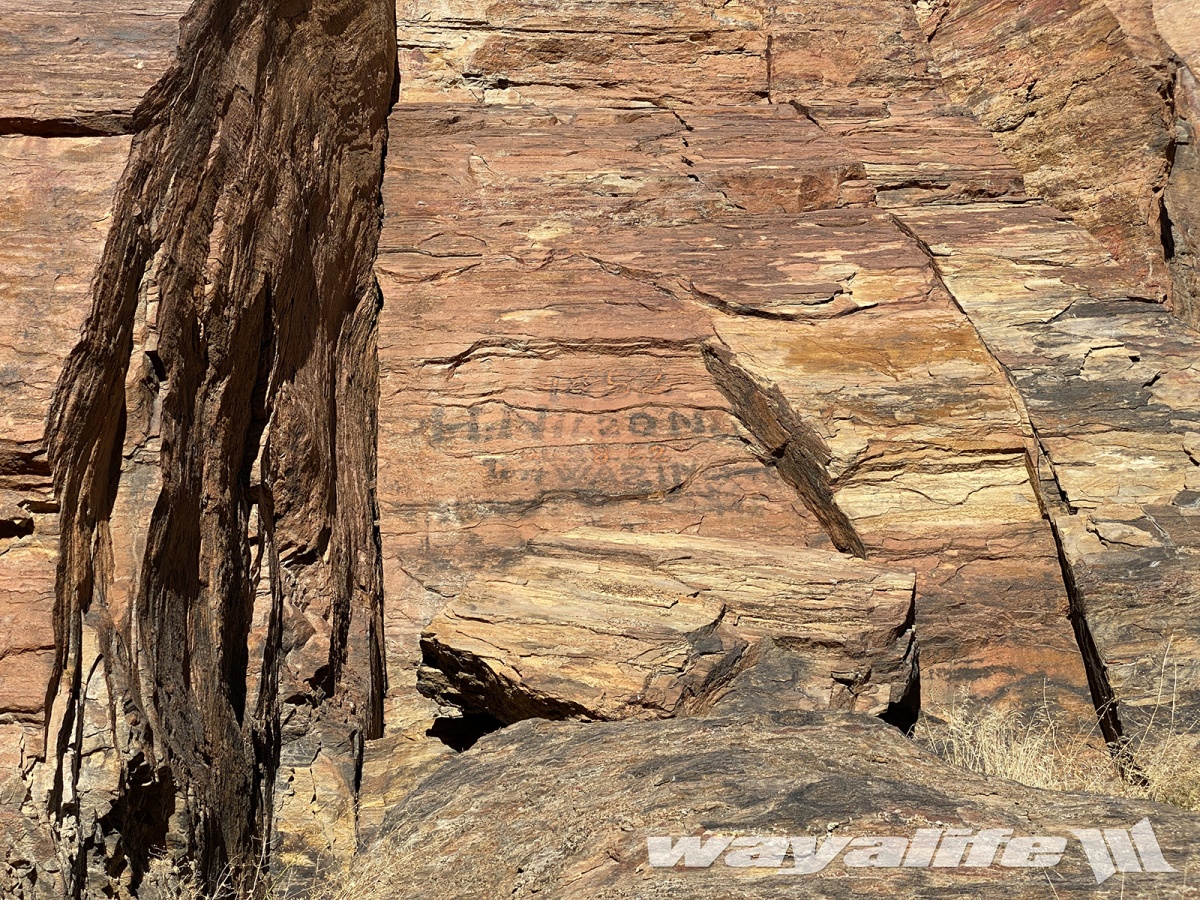
While most of these are almost unreadable today, its still amazes me that they've existed for almost 170 years.
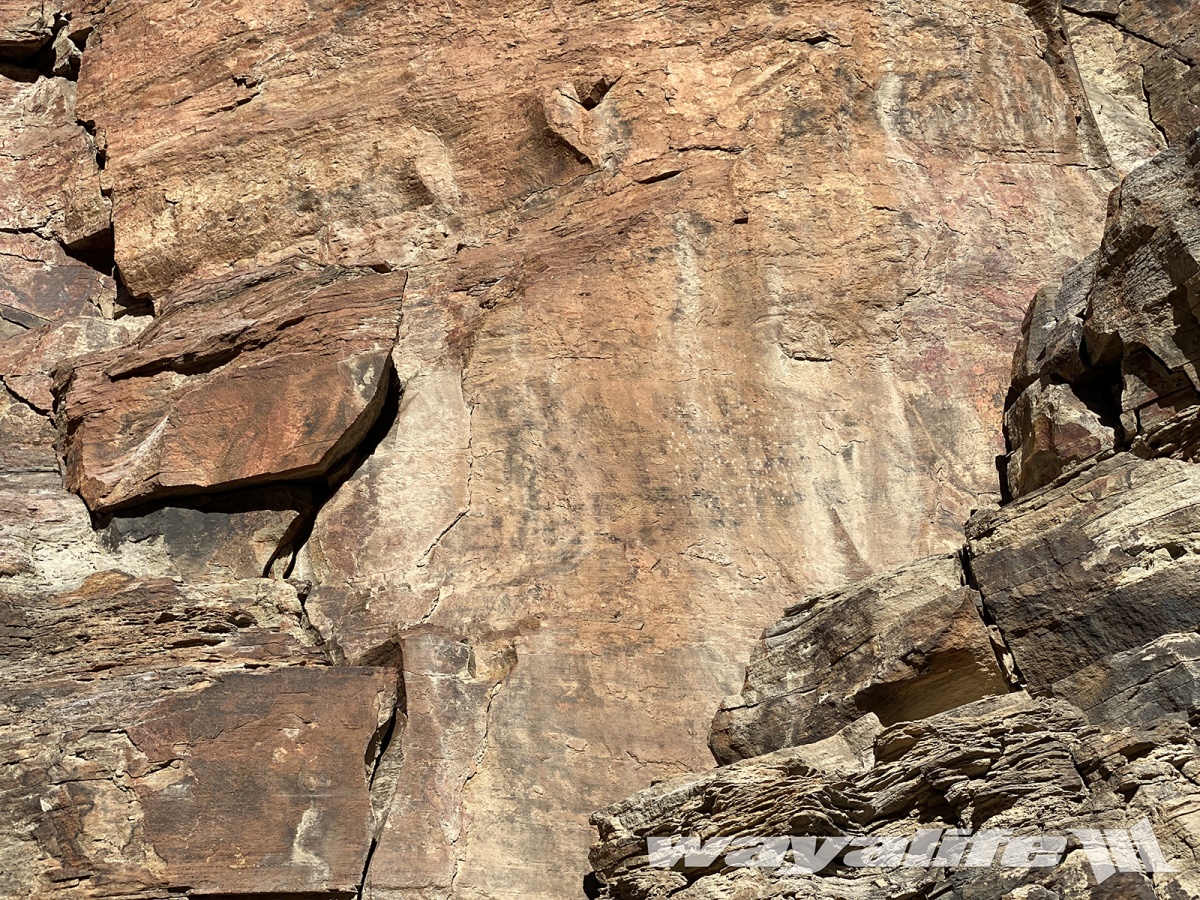
Continuing our adventures to the west.
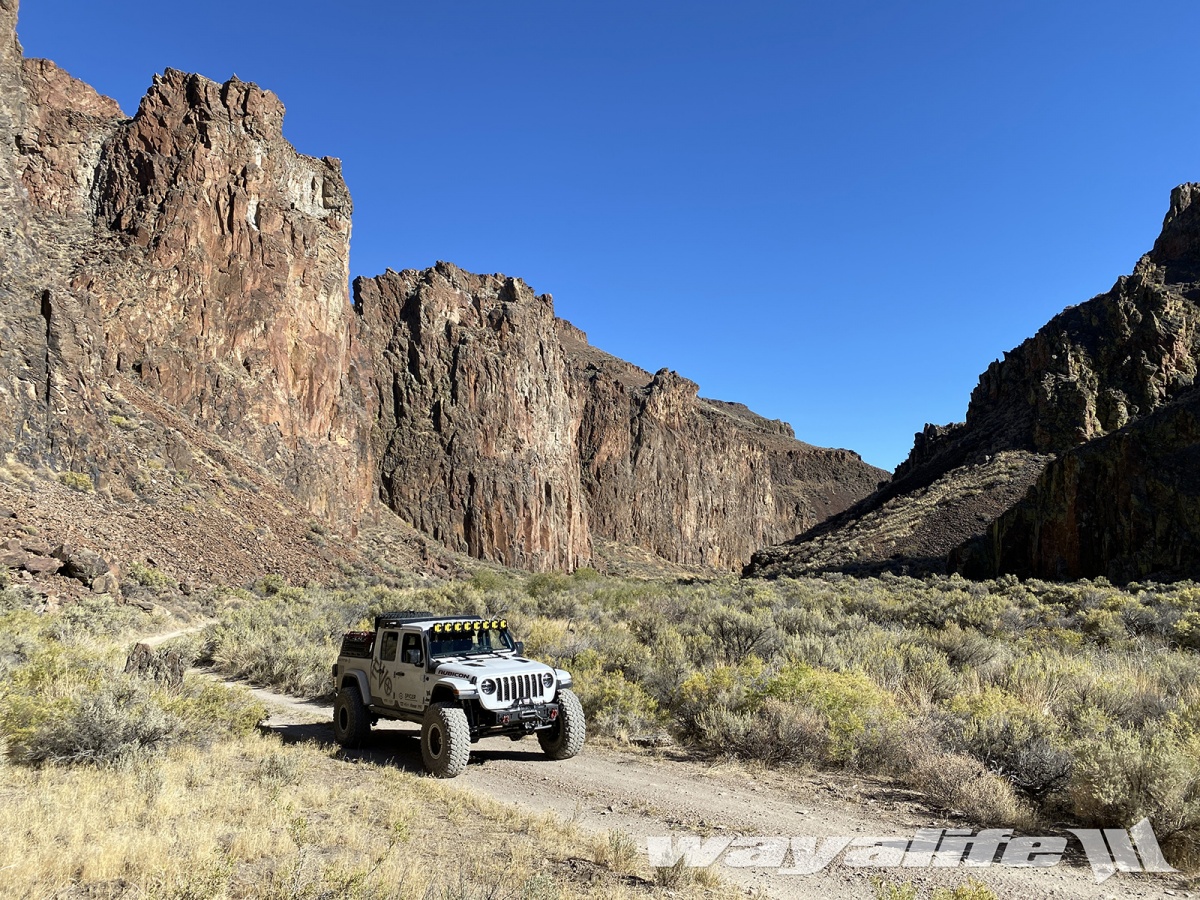
Our next stop along the way was at Mahogany Creek. If you can believe it, the pools of water you can find here contain endemic desert fish left over from the days of ancient Lake Lahontan.
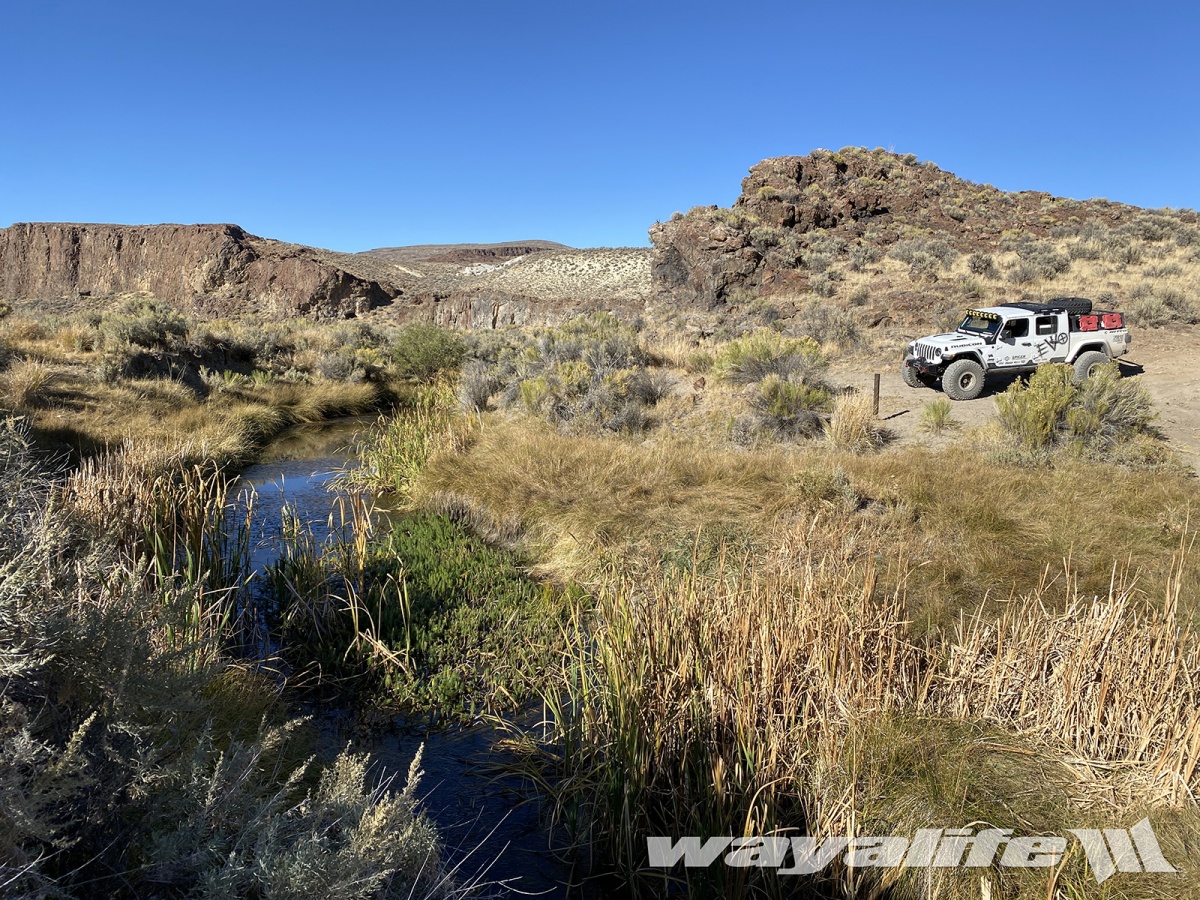
I so wish we had enough time to hike our way into the canyon. Further along, the canyon walls narrow to the point where you can practically stretch out your arms and touch both sides of it.
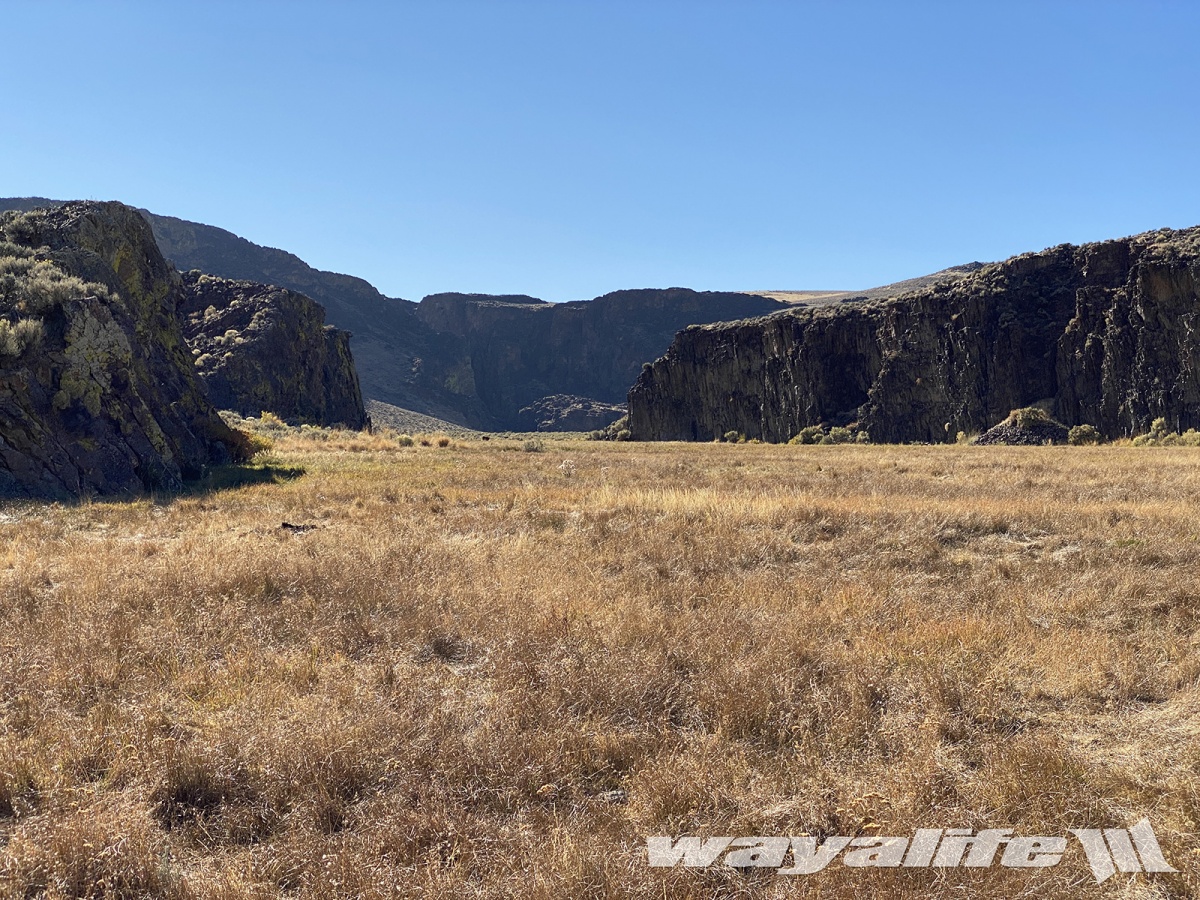
On the move again and about half way through High Rock Canyon, the scenery gets even better.
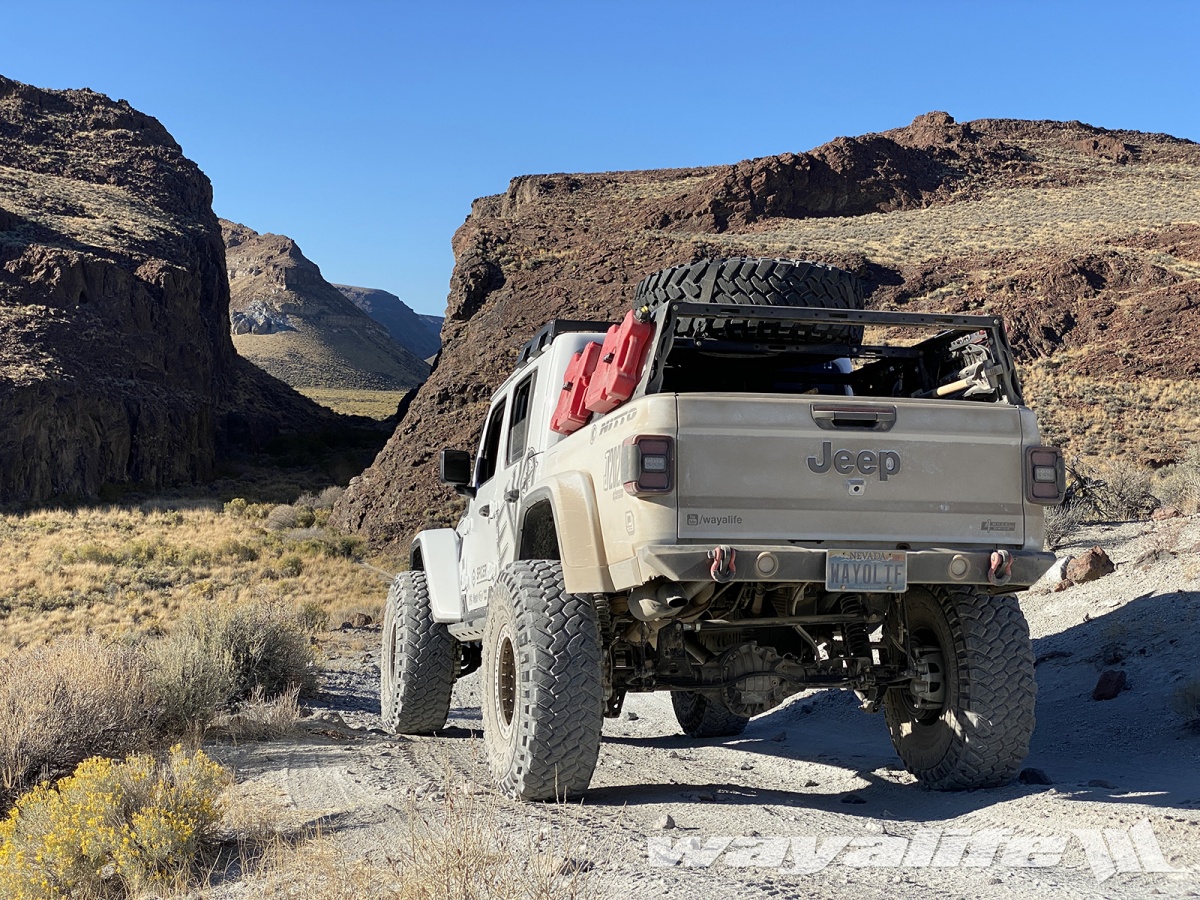
There are a couple of points along the trail where water fording is required.
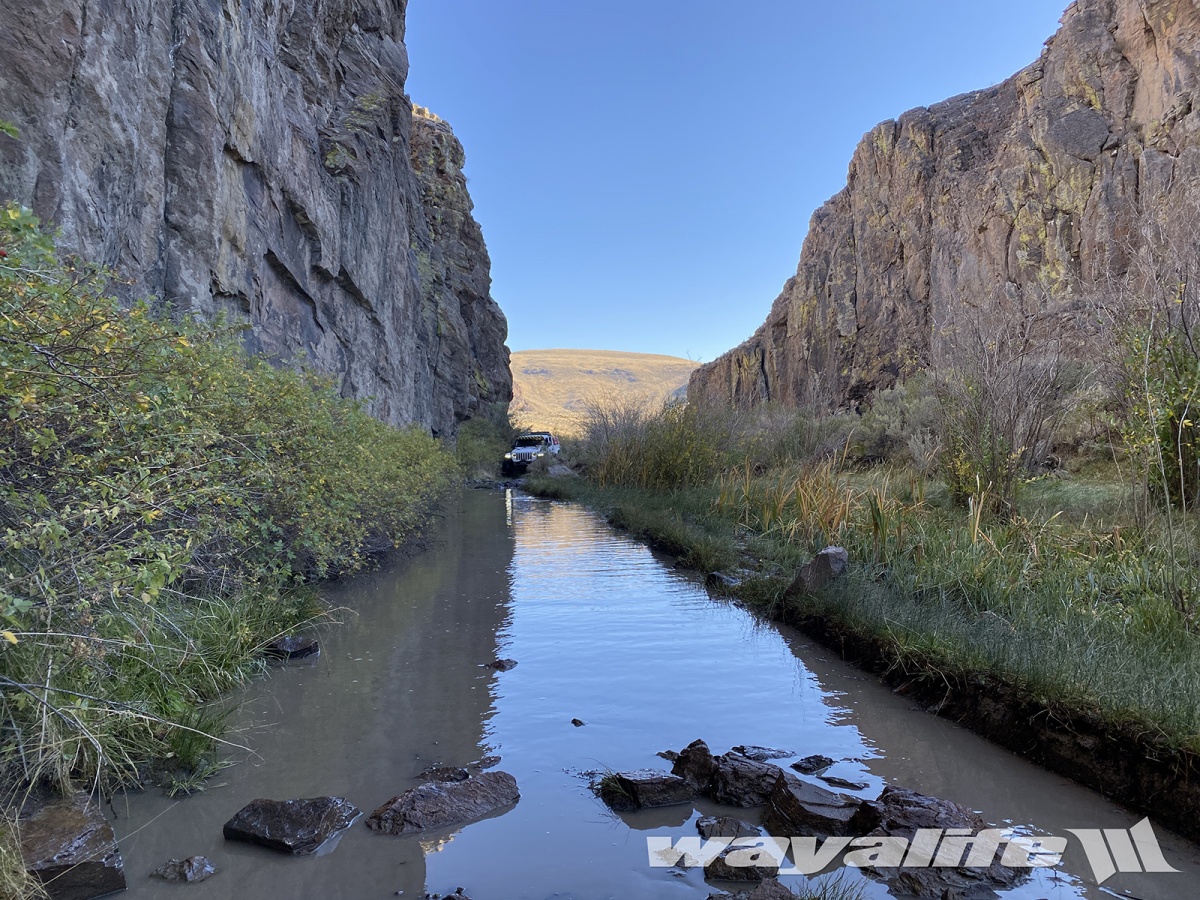
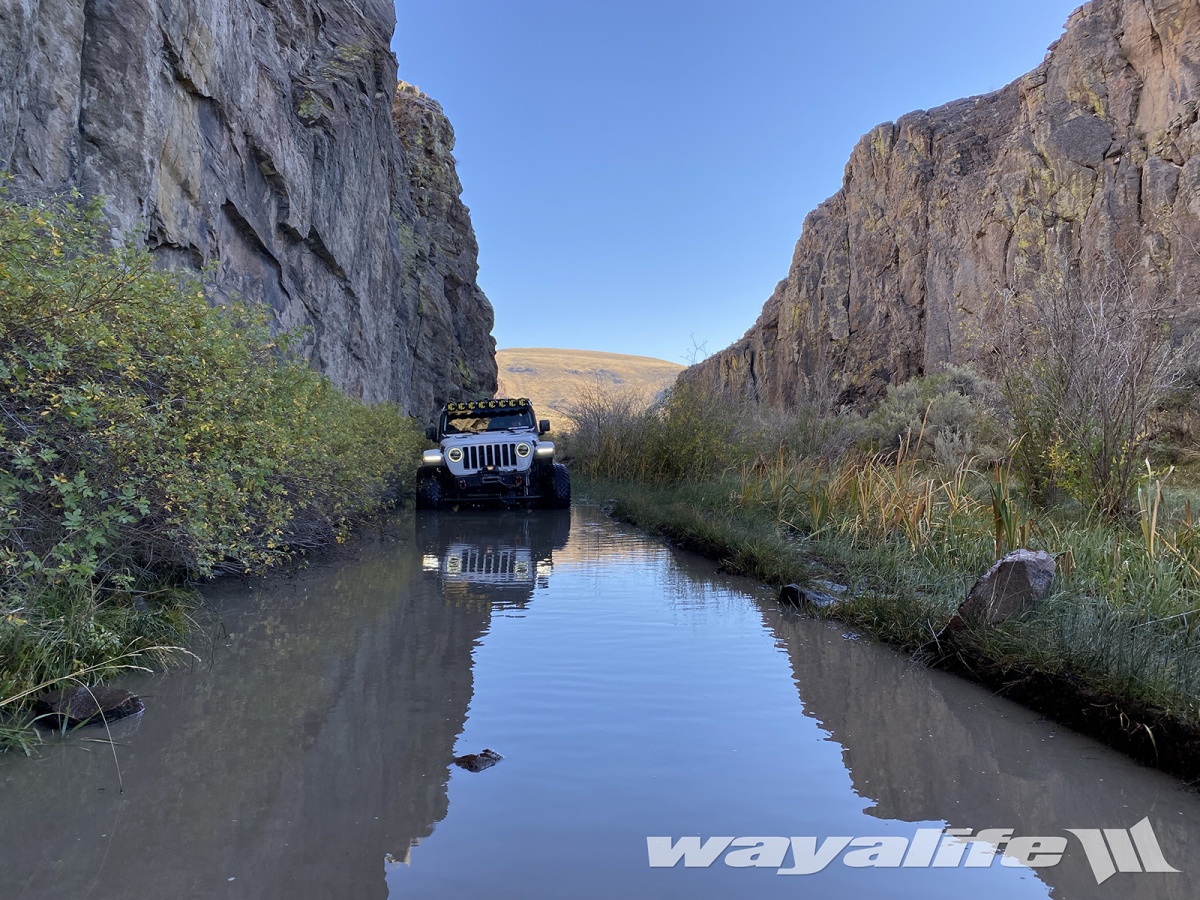
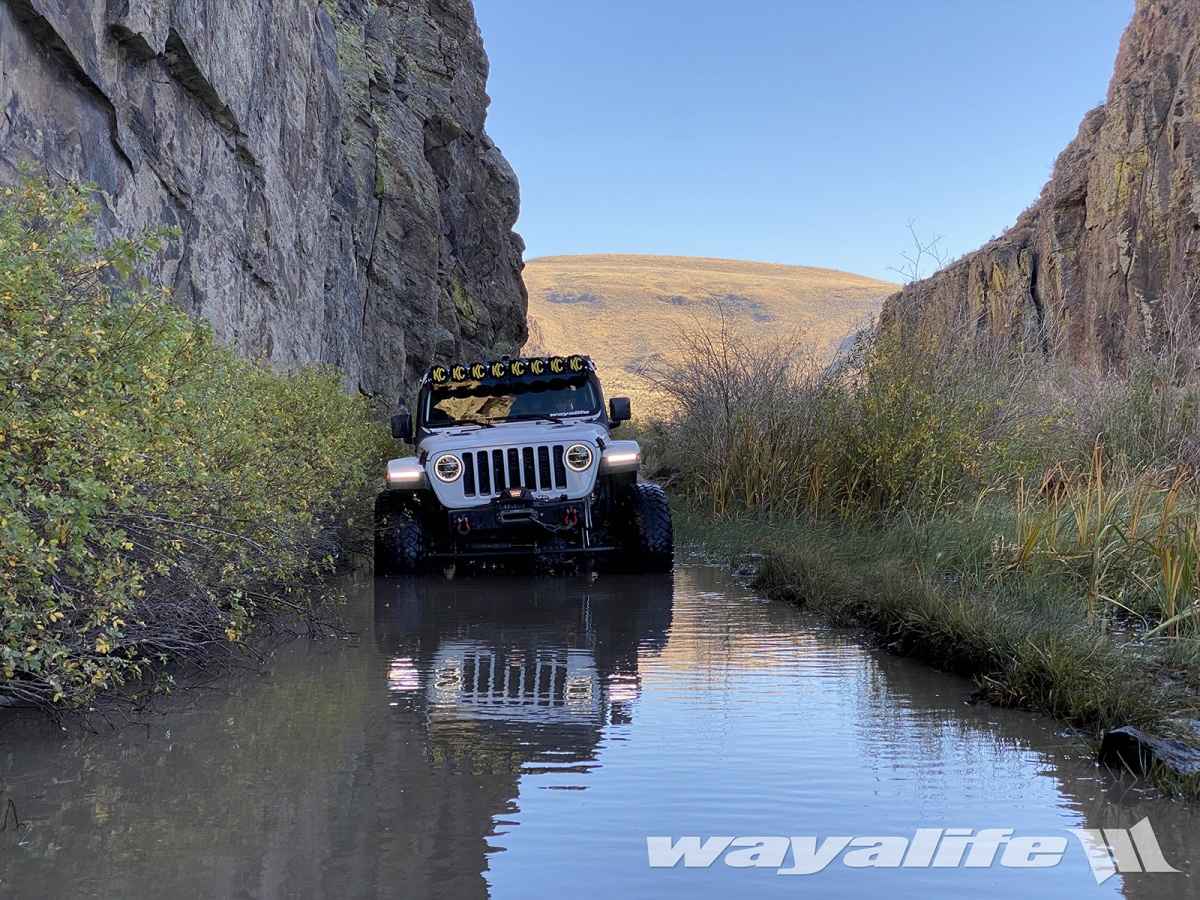
Although the area is remote... really remote as in, far away from civilization, the Applegate Trail and High Rock Canyon are well marked and well maintained by the BLM. In fact, there are certain times of year that the trail is closed for the wildlife.

Autumn is a really nice time of year to be hear if only because the weather is nice and cool and the rabbit bush is in bloom.

It doesn't take long for the canyon to narrow up and get thick with brush.

Our first real stop of the day was at the old High Rock Canyon Post Office.


I say "post office" loosely because it really isn't much more than a cave in the canyon walls.

There are actually multiple caves like this in the canyon and emigrants making their way to California and Oregon would have left messages in them written on paper or in axle grease on the walls. This was typically done by fathers who ventured out early to stake a claim and the message would have been for loved ones who would have left later in the year when the weather and traveling conditions were better.

Although Captain John C. Fremont first recorded his travels through High Rock Canyon back in 1843, it wouldn't be until 1846 that the first wagon train on route to the Willamette Valley or the gold fields in California would start making their way through. In fact, between 1846 and the mid 1860's, it's estimated that 48,000 emigrants would have come this way and many took the time to leave their mark on the towering rock walls.

While some were pecked out of the rock, many were written in axle grease.



While most of these are almost unreadable today, its still amazes me that they've existed for almost 170 years.

Continuing our adventures to the west.

Our next stop along the way was at Mahogany Creek. If you can believe it, the pools of water you can find here contain endemic desert fish left over from the days of ancient Lake Lahontan.

I so wish we had enough time to hike our way into the canyon. Further along, the canyon walls narrow to the point where you can practically stretch out your arms and touch both sides of it.

On the move again and about half way through High Rock Canyon, the scenery gets even better.

There are a couple of points along the trail where water fording is required.




